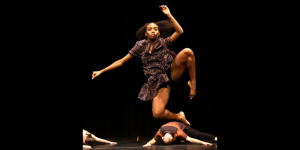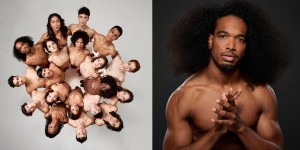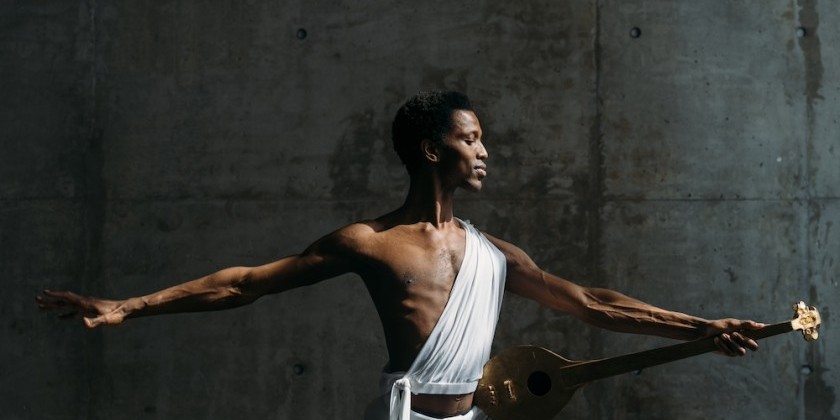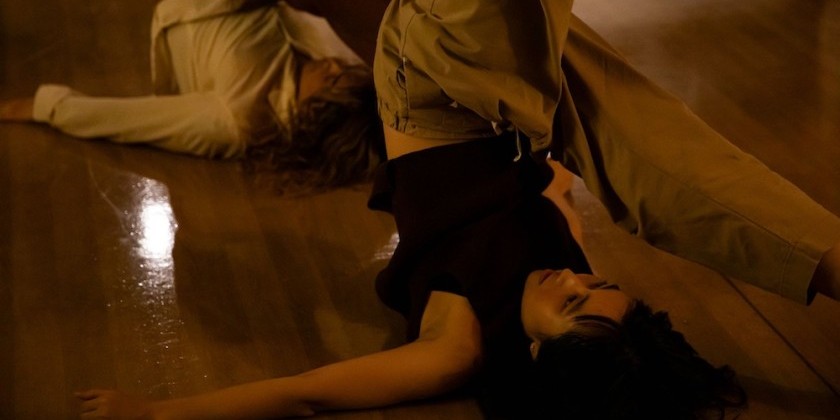IMPRESSIONS: Pontus Lidberg's "On The Nature Of Rabbits" at The Joyce Theater

Artistic Director: Pontus Lidberg
Choreography: Pontus Lidberg
Choreographic Assistant and Project Coordinator: Gamal Gouda
Dramaturgy: Adrian Guo Silver
Animations and Projection: Jason Carpenter
Original Music- Stefan Levin
Costumes- Karen Young
Lighting: KJ
Dancers: Pontus Lidberg, Damiano Artale, Hussein Smko, and Colleen Thomas
Dates: March 6 - 10, 2024
Tickets: Click here
Over his extensive career as a dancer, choreographer and video maker, Pontus Lidberg has molded a mosaic of masterpieces. His latest titled On The Nature Of Rabbits celebrated its New York premiere at The Joyce Theater on Wednesday, March 6, 2024. Lidberg’s creations fall at the intersection of art and technology; in this work, the dancing is married to props and animation.
Lidberg’s works, as self-described in a 2020 interview with internationally renowned dramaturg Lou Cope, have “no story… but that doesn’t mean [they are] without narrative. There is some kind of abstract narrative – above all, working with consequence and logic.” To this observation, On The Nature Of Rabbits reveals a nonlinear montage of dreams and desire.
A program note reads that, “the work draws inspiration from the events occurring shortly after the fall of the Berlin Wall and during the AIDS epidemic.” Danced on Wednesday by Pontus Lidberg, Damiano Artale, Hussein Smko and Colleen Thomas, On The Nature Of Rabbits alludes to these events in a series of vignettes: some joyous and romantic, others dark and desolate. On The Nature Of Rabbits also explores the relationship between imagination and reality, especially in times of fear.
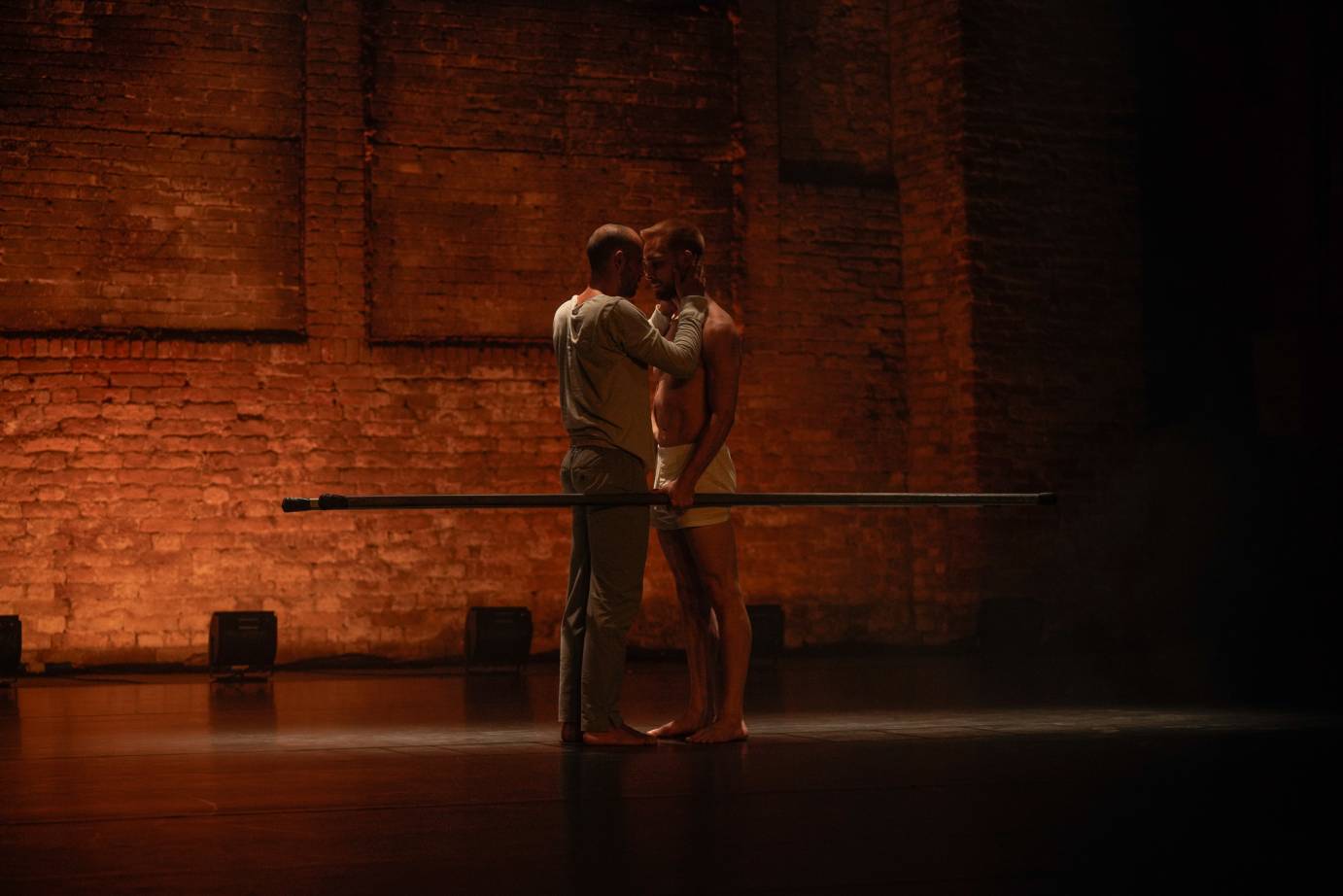
The dancing is passionate, deliberate, and raw. Sweeping movements materialize particularly in duets between Lidberg and Artale. The two portray an evolving relationship, seen in bursts, wrought with compassion and struggle. Smko embodies a pure-hearted zest for life, the inferred fall of his character all the more devastating. Thomas captures a grounded presence, her character offering stability and solace. While their relations to one another are at times ambiguous, the four must navigate a fifth presence: the rabbit.
The personification of rabbits is a recurring motif, which leaves viewers to consider its symbolism. Do rabbits serve as characters of comfort? This is suggested by a stuffed rabbit, which Lidberg's character cherishes, resting on stage at the beginning of the work. An image comes to mind of Lidberg, abandonedly grooving to a rock ballad, while the rabbit keeps him company. In another scene, Lidberg and Smko reimagine the movements of a rabbit through frenzied skips, hops, and gestures indicating ears and a tail.
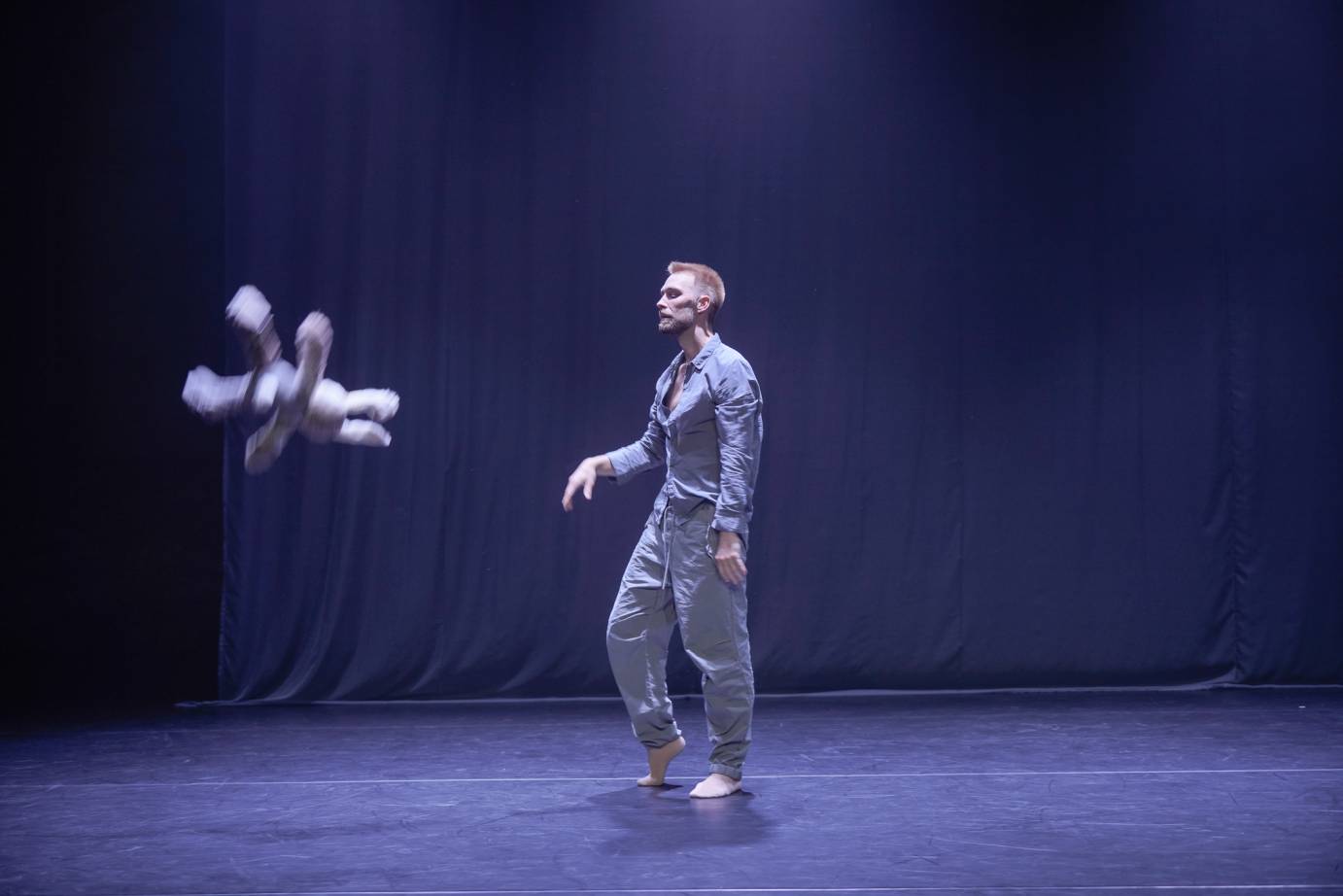
Or, are rabbits malevolent, as in the character embodied by Artale? Artale wears an intimidating rabbit mask, and drifts through the dance with an aura of authority. His character often makes use of the dance’s props. He inflates balloons – sometimes with air and sometimes with water – tying them to Lidberg’s limbs in an early scene to create an image of Lidberg’s body floating away. Artale also adorns Lidberg with a more cartoonish rabbit mask, which is soon after removed by Thomas.
Artale’s rabbit echoes through the scenes as an old friend, a lover, and a confidant, to Lidberg, and even a master of death, as he leads an inflicted Smko — air-filled balloons stuffed inside the sleeves of his clothing to imply succumbing to illness — offstage.
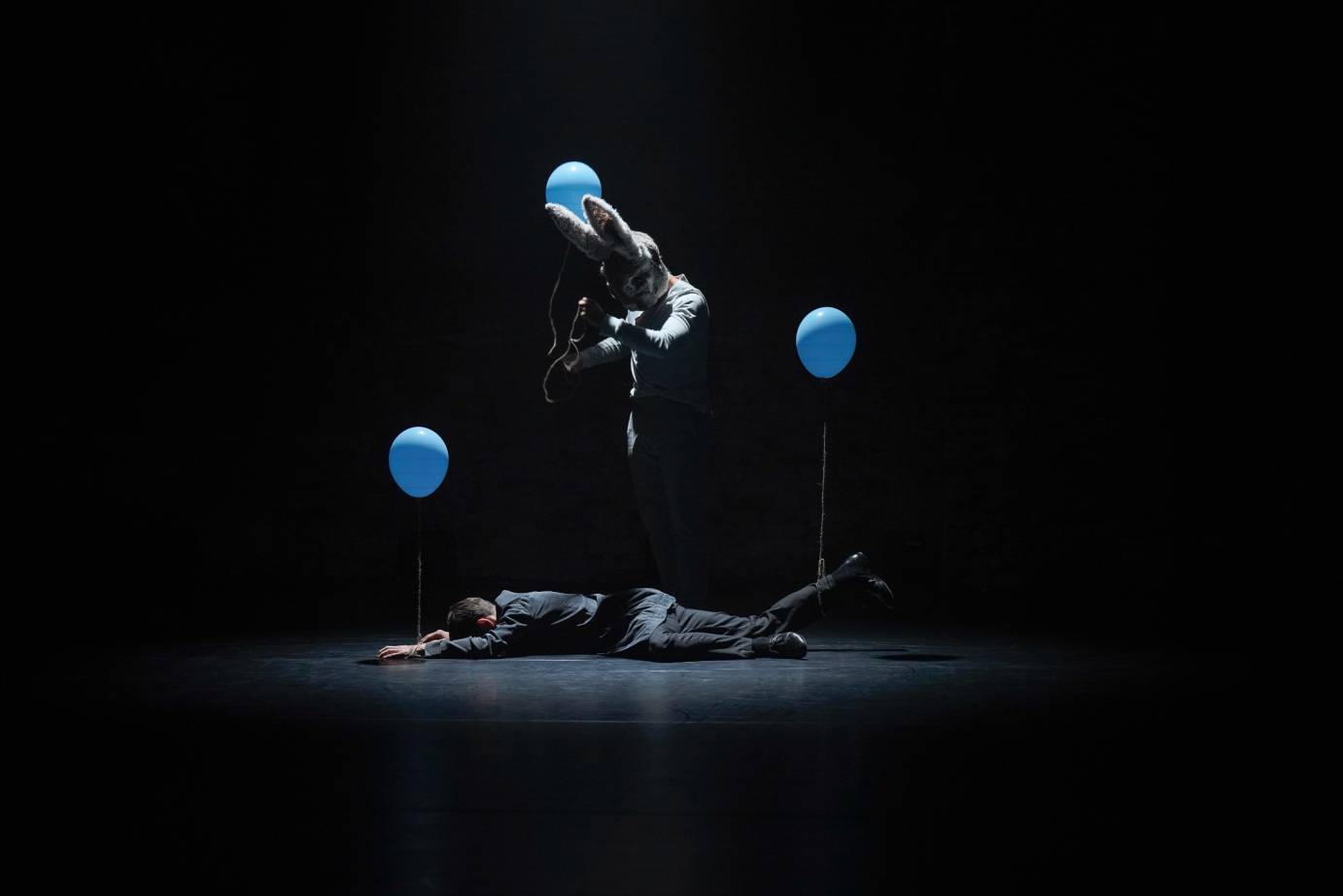
Beyond the characters’ experiences with one another, the various props refer to the time following the fall of the Berlin Wall and the AIDS epidemic. The largest prop: a huge, billowing curtain (perhaps referencing the “iron curtain” or the Berlin wall itself), falls upstage. The curtain offers separation, creating a distorted look. A ladder, the toy rabbit, the two rabbit masks, and balloons interweave throughout the work.
The dancers step through the ladder more often than they use it to ascend. They slip through the rungs in order to embrace. They carry the ladder, swinging it around the stage to change its orientation. Climbing up is only possible with support from another.
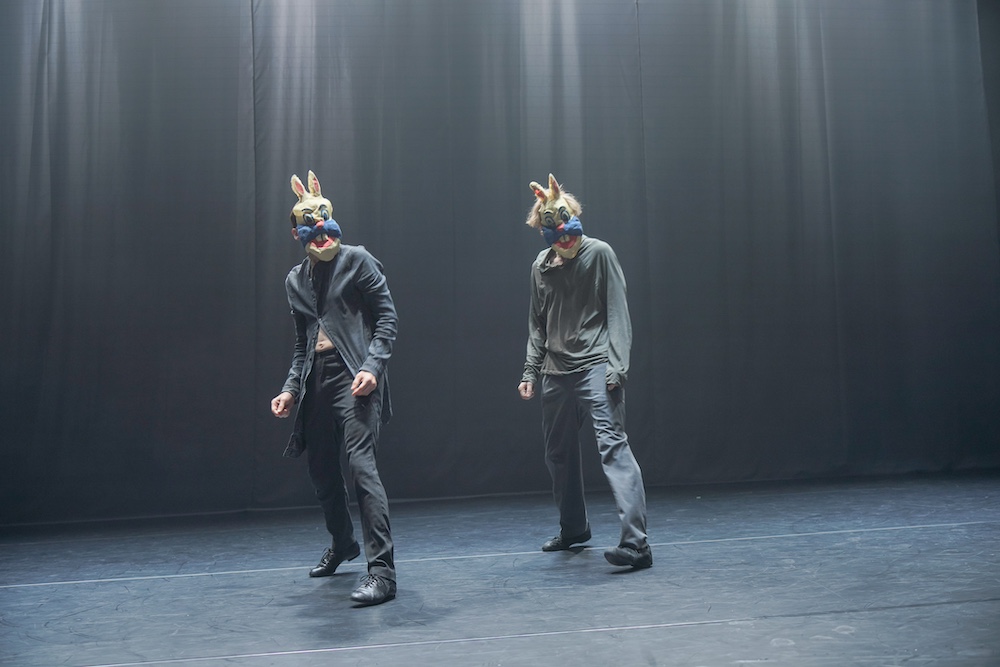
Additionally, projections such as three-dimensional storm clouds and ominous silhouettes of white rabbits designed by Jason Carpenter, appear on the curtain. A striking image occurs when the projection of a white rabbit appears, creating the illusion of Smko’s shadow. The rabbit, reflecting the exact movements of Smko, indicates a transformation.
On The Nature Of Rabbits, a montage of moving parts, leaves viewers on a hopeful note with its nonlinear path, shared trials of self-discovery, reflection and struggle. At the work’s conclusion, Lidberg and Artale, their faces free from rabbit masks, are seen in a seated embrace, cradling one another.




